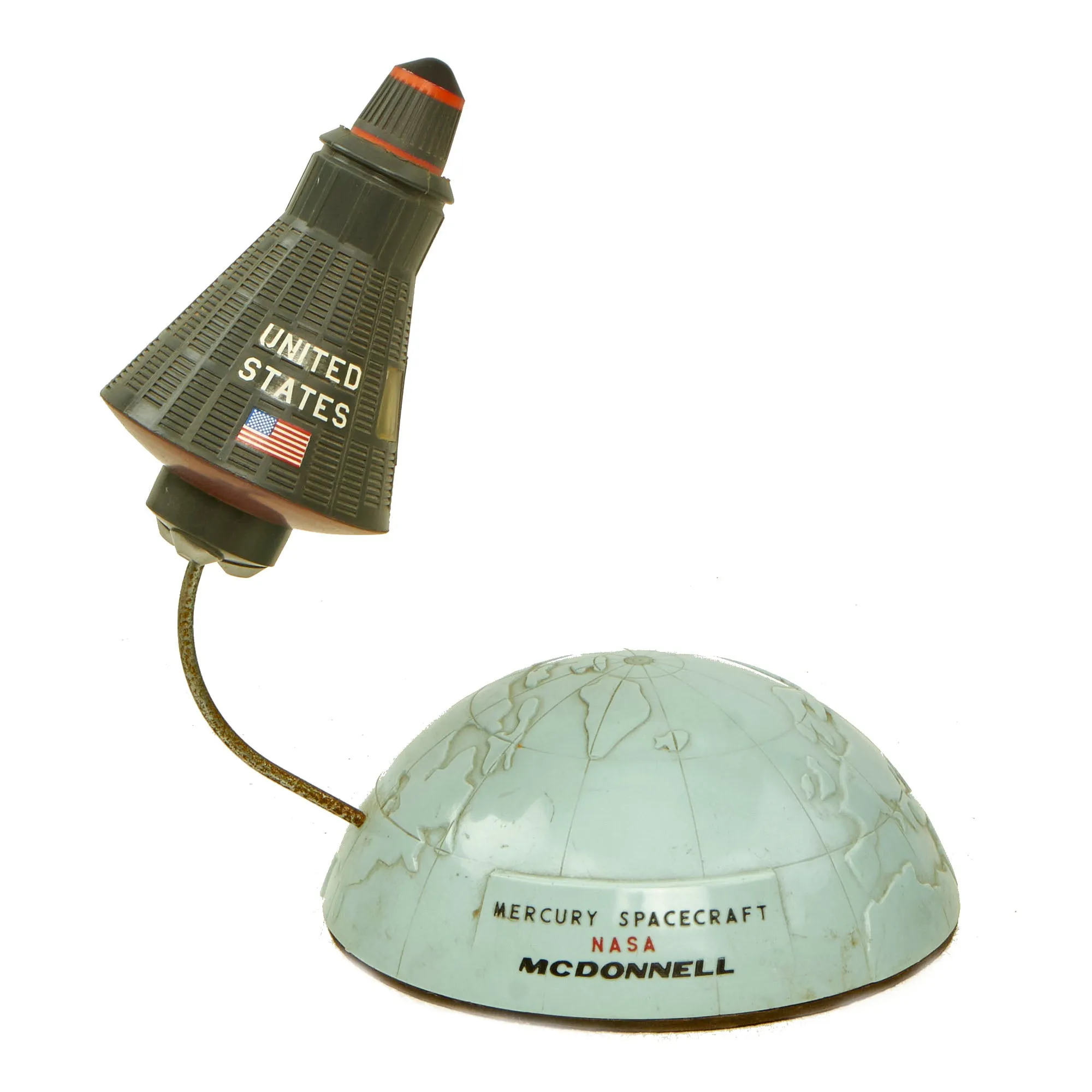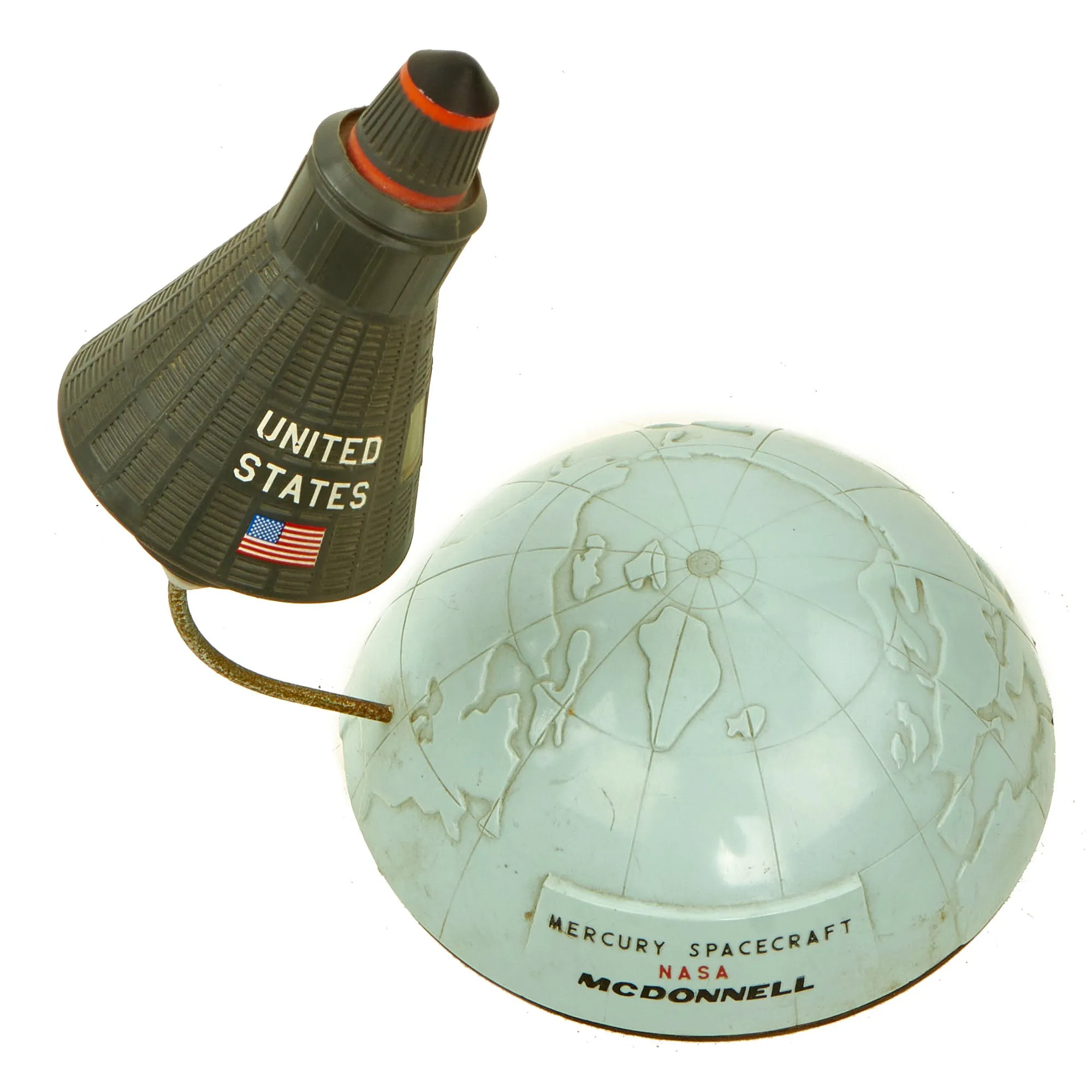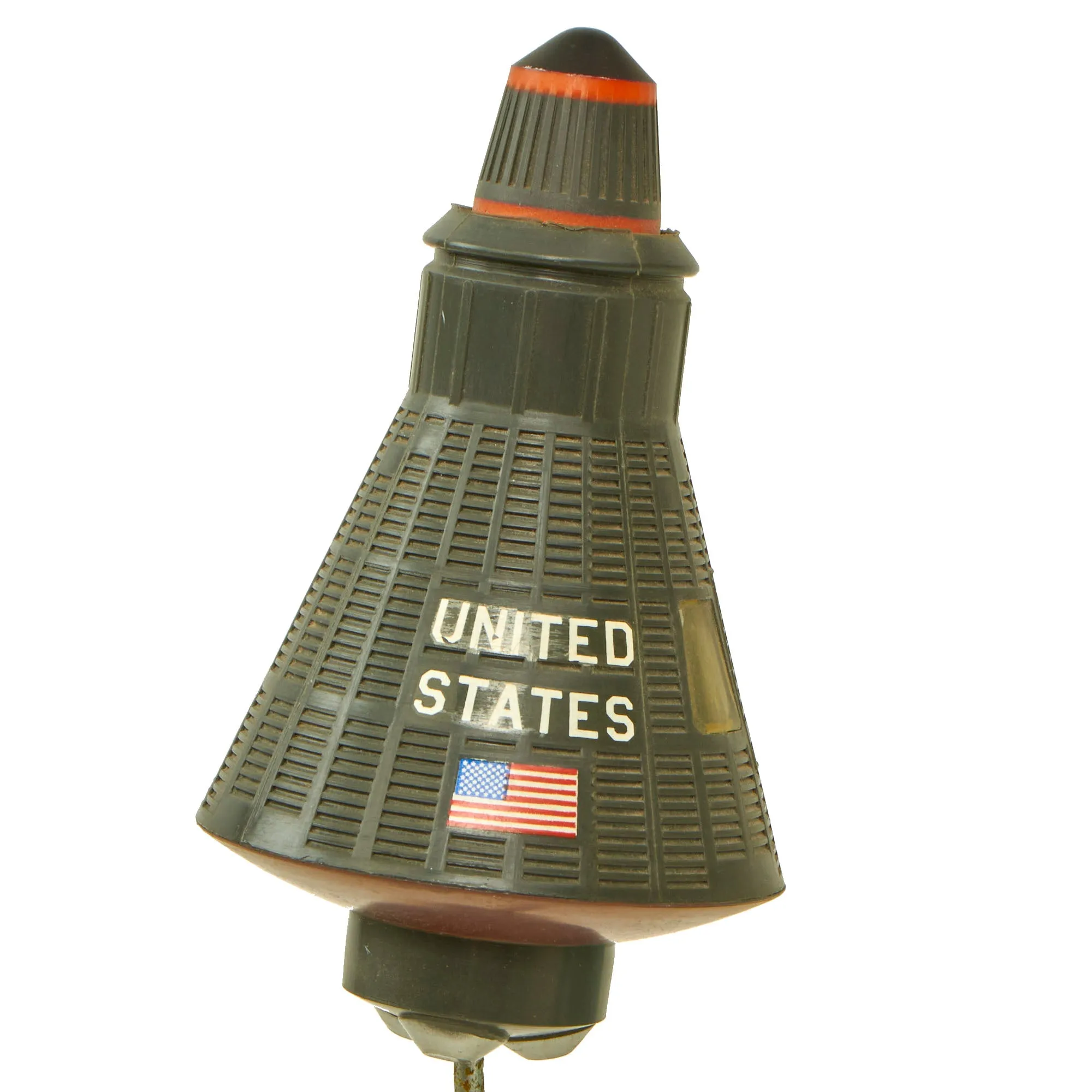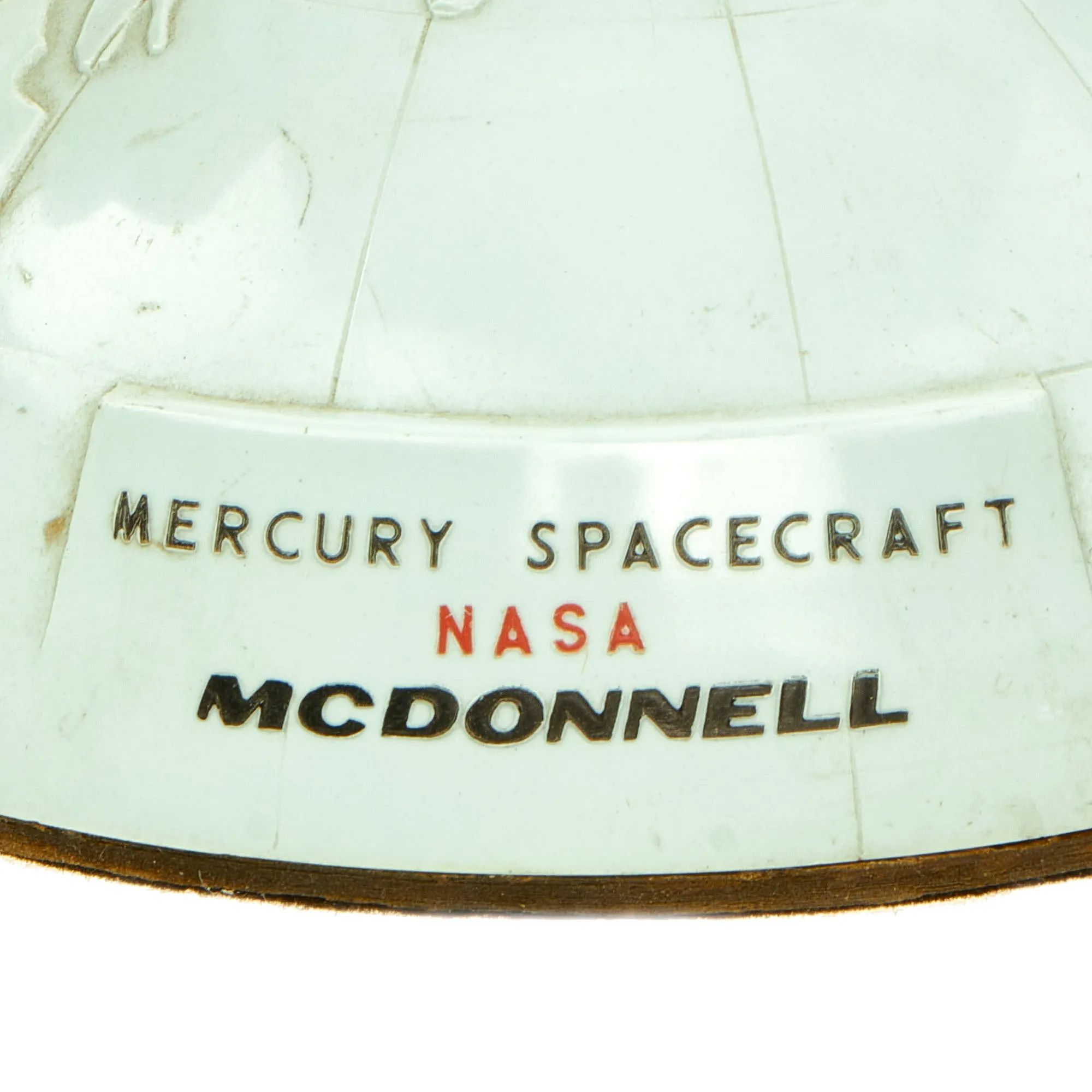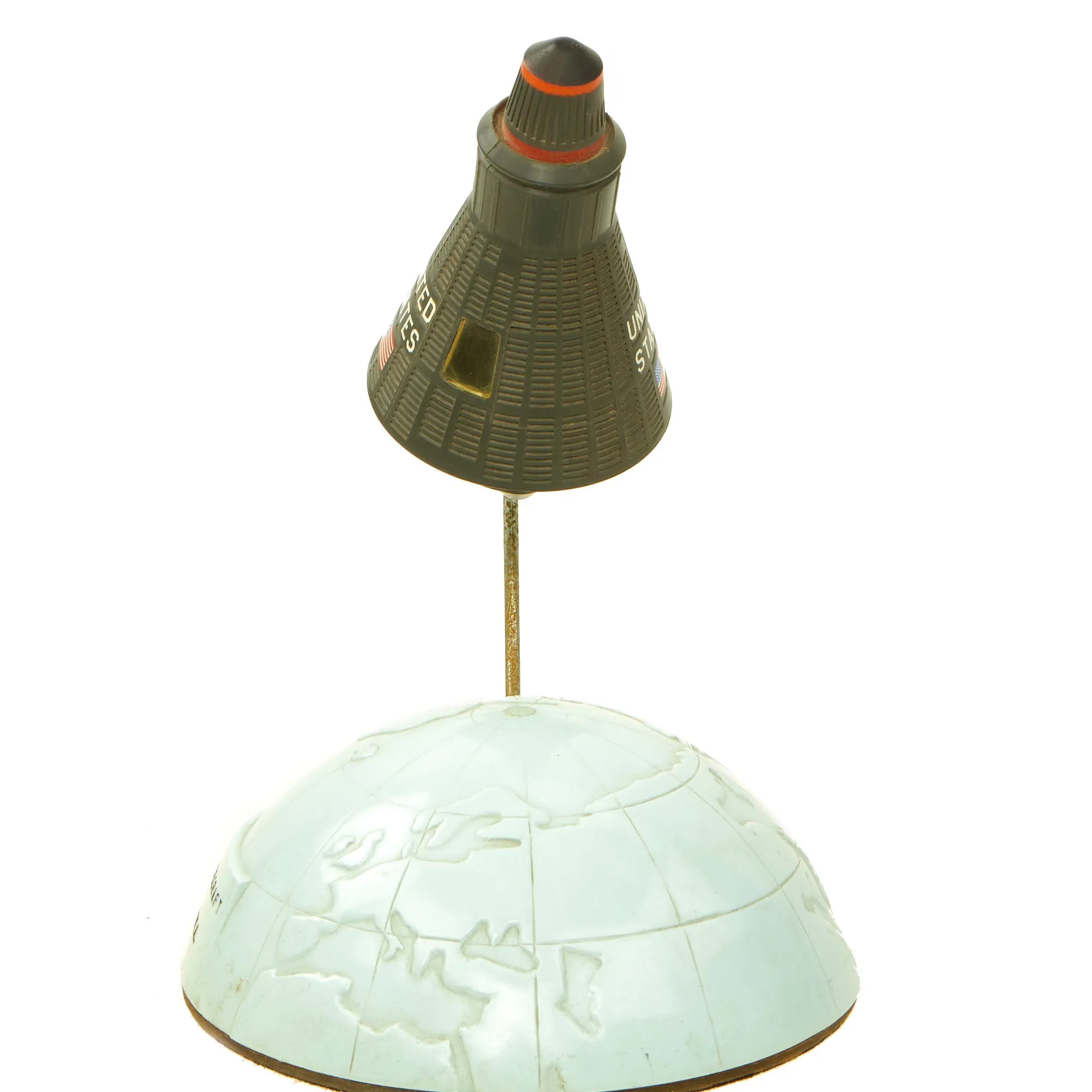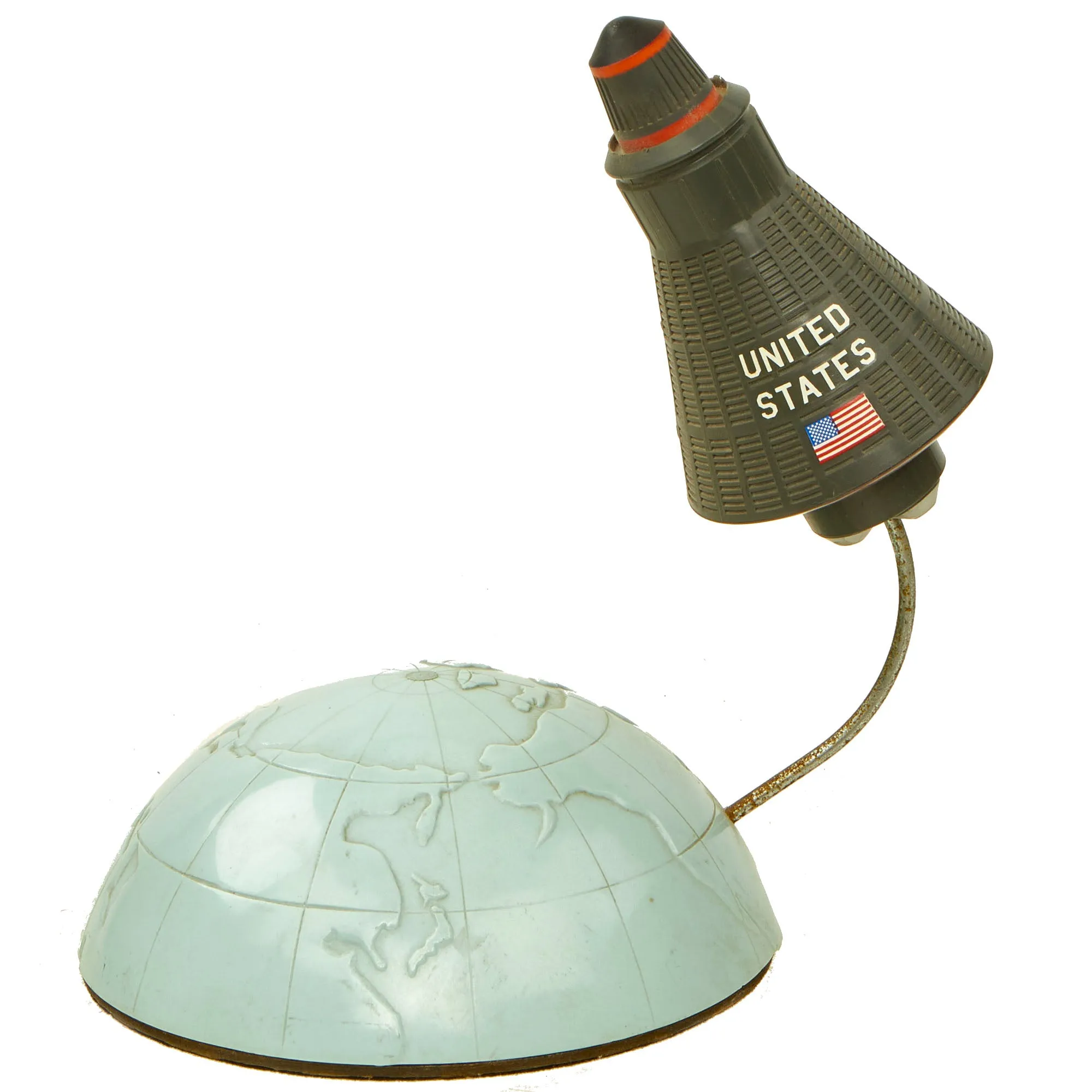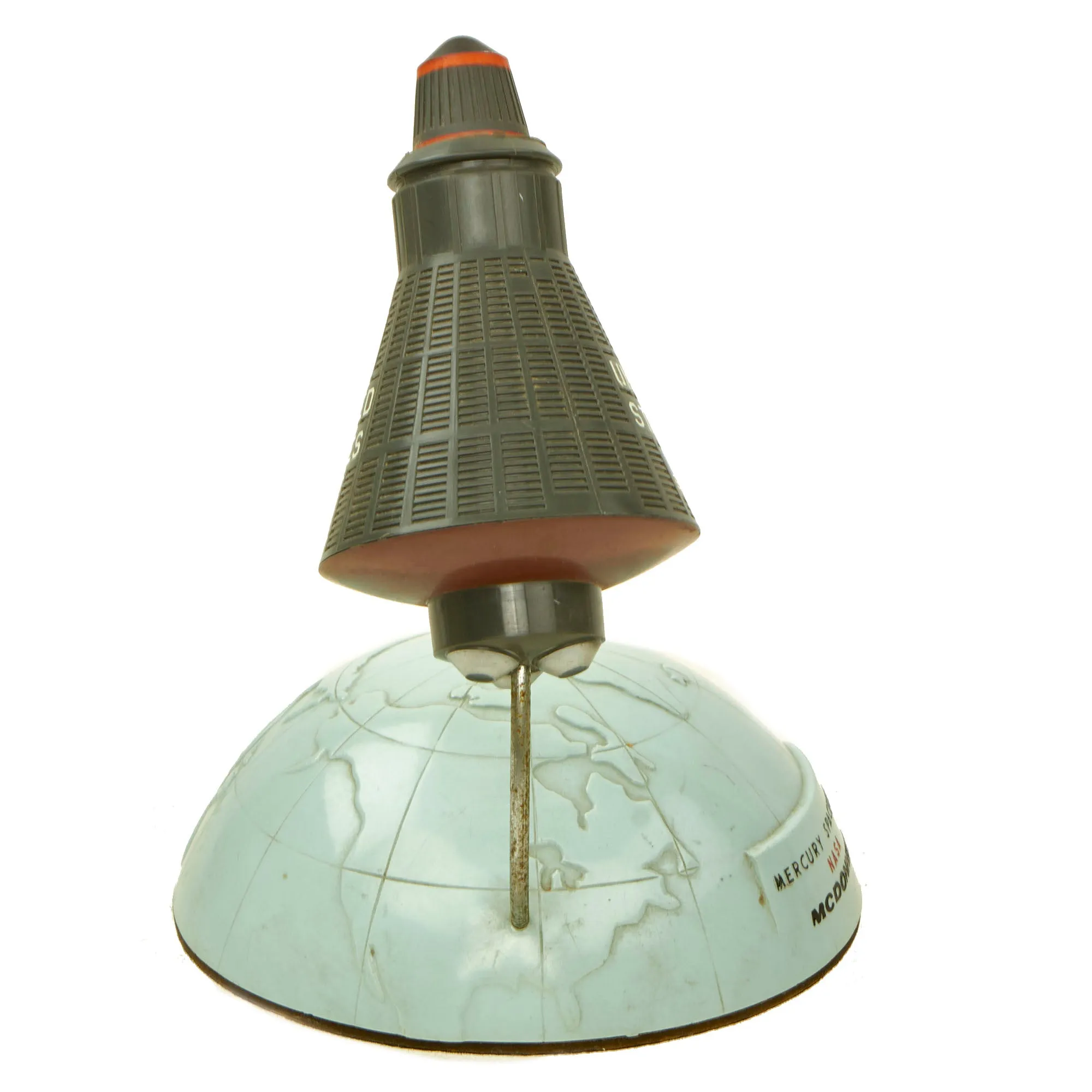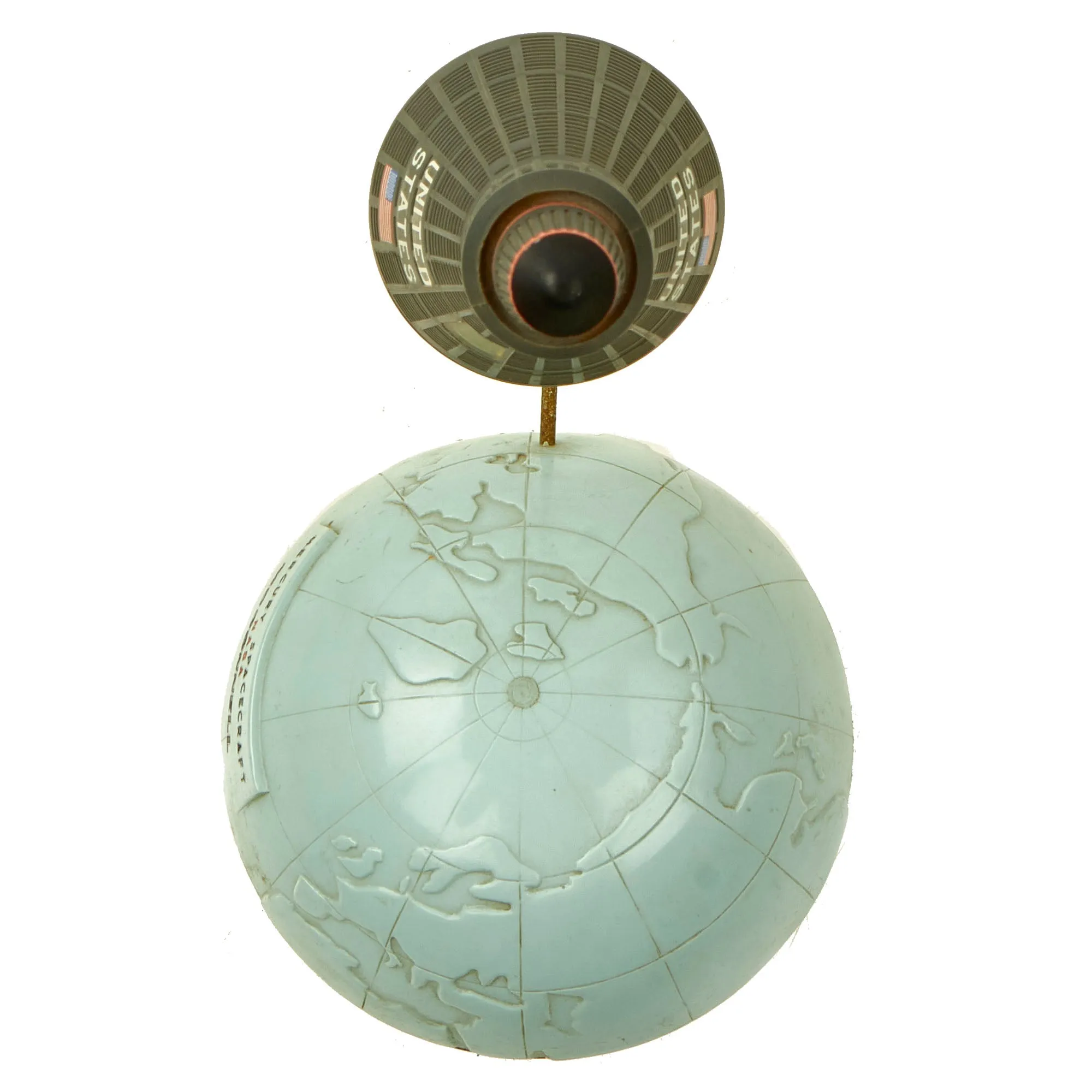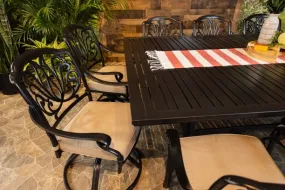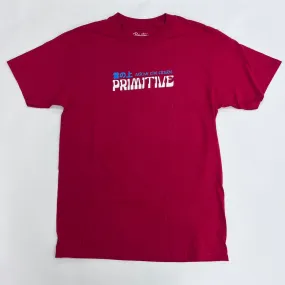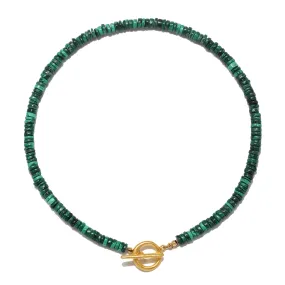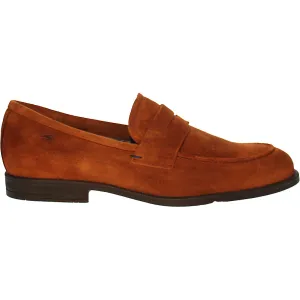Original Item: Only One Available. This is a lovely example of a Space Race era (1959-1963) half globe model by Topping Inc. This is a plastic model of the Mercury spacecraft with a plastic half-globe base, 10.5 x 7.5 inches. Model painted black and is unfortunately without the red escape tower and rocket, two US flags and "UNITED STATES" on the crew compartment. Base is labeled "Mercury Spacecraft NASA McDonnell." The crew compartment is removable from the wire that it sits on. The bottom has a cardboard base covered in felt but is no longer secured to the model and would have to be glued back in place.
Comes more than ready for further research and display.
Edward W. “Bill” Topping was born on April 22, 1908 in Akron, OH. to Edward Weston Topping and Florence Cowles Durr. He was raised by his grandparents when his parents were among the 96 victims of the Wellington, Washington train avalanche on March 1, 1910. Bill’s father, Edward Weston Topping, had worked at Goodyear and was a close friend of the President and Board Chairman, Mr. Paul Litchfield. He continued to live with his grandparents until their passing away in 1936 and soon met and married his wife, Evelyn Ann Copenhaver in 1938. Bill attended the Case School of Applied Science and always had an interest in aviation and building models.
Mr. Litchfield offered Bill his first job as a salesman in 1936, traveling thru the Midwest selling tubeless tires. He transferred to a Goodyear mechanical dept. in 1940 and when WWII broke out in 1941, Bill requested to be assigned to the Grumman Aircraft Company as Goodyear's representative and set out for New York. Grumman had a collection of miniature aircraft models which were not very detailed. Bill asked what the price was for the models and commented to a Grumman exec that he could make a better detailed model for half the cost. The Grumman exec remembered the comment and later gave Topping his first order for 1,500 models. That model is thought to have been the Grumman Hellcat.
During 1942, Topping also started producing props for flying wire controlled model airplanes. The props included a three bladed plastic and a 10 1/4" wooden two bladed adjustable pitch prop. The same year, he met Leland Hardy, an Army WWII veteran who owned a small company named H & P Plastics and flew models as a hobby. Mr. Hardy's business was run out of the basement of his home in Grafton, OH. with up to 14 employees. Mr. Hardy had recommended Toppings early plastic models be made by Majestic Molding Co. and is also credited to introducing Topping to Joe Goldsmith of Buckeye Molding. The "Topping 100" kit came out into the market for a short period in December 1945. The "Topping 100" was constructed of aluminum and came ready to assemble with a three-blade plastic prop. The cost was $10 however did not include the engine or wet cell. Toppings business with injection molded models grew and soon sold the propeller business to Mr. Hardy. Mr. Hardy passed away at the age of 94 on July 8, 2012.
While employed with Goodyear, the new company, Topping Models officially became full time in 1945 and incorporated on May 15, 1950 with the office headquarters located in Akron. Topping Assemblies, Inc. was formed on October 3, 1955 and located in Elyria, OH. approximately 52 miles Northwest of Akron.
Mercury-Atlas was a subprogram of Project Mercury that included most of the flights and tests using the Atlas LV-3B launch vehicle. The Atlas was also used for one Mercury flight under the Big Joe subprogram.
The Mercury mission numbering system was: a two-letter designation marking the launch vehicle type, followed by a dash, then a number designating the flight/test number. The Atlas launch vehicles used for Project Mercury were given a two- or three-digit number followed by a "-D", indicating that they were the "D" version of the Atlas.
Project Mercury
Project Mercury was the first human spaceflight program of the United States, running from 1958 through 1963. An early highlight of the Space Race, its goal was to put a man into Earth orbit and return him safely, ideally before the Soviet Union. Taken over from the US Air Force by the newly created civilian space agency NASA, it conducted 20 uncrewed developmental flights (some using animals), and six successful flights by astronauts. The program, which took its name from Roman mythology, cost $2.38 billion (adjusted for inflation). The astronauts were collectively known as the "Mercury Seven", and each spacecraft was given a name ending with a "7" by its pilot.
The Space Race began with the 1957 launch of the Soviet satellite Sputnik 1. This came as a shock to the American public, and led to the creation of NASA to expedite existing US space exploration efforts, and place most of them under civilian control. After the successful launch of the Explorer 1 satellite in 1958, crewed spaceflight became the next goal. The Soviet Union put the first human, cosmonaut Yuri Gagarin, into a single orbit aboard Vostok 1 on April 12, 1961. Shortly after this, on May 5, the US launched its first astronaut, Alan Shepard, on a suborbital flight. Soviet Gherman Titov followed with a day-long orbital flight in August 1961. The US reached its orbital goal on February 20, 1962, when John Glenn made three orbits around the Earth. When Mercury ended in May 1963, both nations had sent six people into space, but the Soviets led the US in total time spent in space.
The Mercury space capsule was produced by McDonnell Aircraft, and carried supplies of water, food and oxygen for about one day in a pressurized cabin. Mercury flights were launched from Cape Canaveral Air Force Station in Florida, on launch vehicles modified from the Redstone and Atlas D missiles. The capsule was fitted with a launch escape rocket to carry it safely away from the launch vehicle in case of a failure. The flight was designed to be controlled from the ground via the Manned Space Flight Network, a system of tracking and communications stations; back-up controls were outfitted on board. Small retrorockets were used to bring the spacecraft out of its orbit, after which an ablative heat shield protected it from the heat of atmospheric reentry. Finally, a parachute slowed the craft for a water landing. Both astronaut and capsule were recovered by helicopters deployed from a US Navy ship.
The Mercury project gained popularity, and its missions were followed by millions on radio and TV around the world. Its success laid the groundwork for Project Gemini, which carried two astronauts in each capsule and perfected space docking maneuvers essential for crewed lunar landings in the subsequent Apollo program announced a few weeks after the first crewed Mercury flight.




